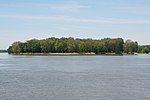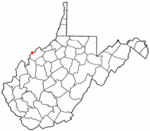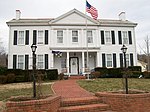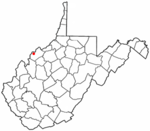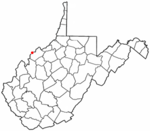Blennerhassett Island Bridge
2008 establishments in Ohio2008 establishments in West VirginiaBlennerhassett IslandBridges completed in 2008Bridges of the United States Numbered Highway System ... and 14 more
Bridges over the Ohio RiverBuildings and structures in Washington County, OhioBuildings and structures in Wood County, West VirginiaNetwork arch bridgesRoad bridges in OhioRoad bridges in West VirginiaSouthern United States bridge (structure) stubsSteel bridges in the United StatesTied arch bridges in the United StatesTransportation in Washington County, OhioTransportation in Wood County, West VirginiaU.S. Route 50West Virginia building and structure stubsWest Virginia transportation stubs

Blennerhassett Island Bridge, with a network arch design, carries U.S. Route 50 (Appalachian Development Highway System's Corridor D) over the Ohio River and the historic Blennerhassett Island between Belpre Township, Ohio and Washington, West Virginia in the United States. Construction of the bridge was overseen by the Walsh Construction Company of Chicago, and it opened to traffic on June 13, 2008. The completion of the span completed Corridor D between Interstate 275 east of Cincinnati to Interstate 79 at Clarksburg, West Virginia.
Excerpt from the Wikipedia article Blennerhassett Island Bridge (License: CC BY-SA 3.0, Authors, Images).Blennerhassett Island Bridge
Blennerhassett Island Bridge,
Geographical coordinates (GPS) Address Nearby Places Show on map
Geographical coordinates (GPS)
| Latitude | Longitude |
|---|---|
| N 39.276666666667 ° | E -81.646944444444 ° |
Address
Blennerhassett Island Bridge
Blennerhassett Island Bridge
26181
West Virginia, United States
Open on Google Maps

